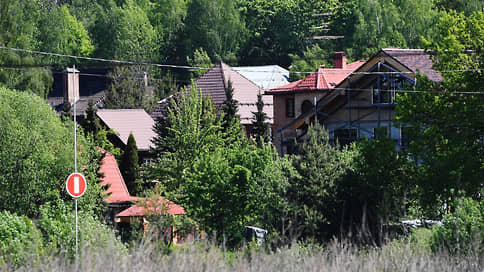Demand for suburban real estate in the Moscow region fell by 4.4% in the summer
[ad_1]

The suburban real estate market in the Moscow region, where demand grew at the height of the pandemic, faced the opposite situation this summer. The interest of buyers in such objects decreased by 20%. Houses outside the city are not included in the list of priority assets, therefore, in a crisis, citizens try to get rid of them, market participants explain. Now in this segment, buyers have focused on buying plots, which, unlike ready-made houses, can be obtained with a mortgage with state support.
Demand for suburban real estate in the Moscow region in the summer of 2023 decreased by 4.4% year-on-year, Avito Nedvizhimost calculated. The founder of Nordhus, Alexander Petrov, speaks of a decrease in buyers’ interest in this format of real estate by 10% year-on-year. Point Estate Managing Partner Pavel Treivas noticed a 20% reduction. AREA board member Grigory Ashikhmin attributes this to the unstable situation in the country: “Such real estate is not included in the list of priority assets, citizens try to get rid of it in the first place during a crisis.”
At the same time, according to Avito Nedvizhimost, the volume of supply of such objects on the market of the Moscow region increased by 5.4% year-on-year by the end of the summer. Head of the suburban real estate center “Etazhy” Anton Saukov says that in the base of his company, the supply of newly built suburban real estate in the region increased by 22% year-on-year, secondary objects – by 41%. “This segment accelerated into a pandemic when, due to the high demand for suburban life, developers began to buy plots for such projects, and rising prices prompted many Muscovites to sell unused dachas,” he recalls. Now demand is 70% lower than at the height of the pandemic, says Grigory Ashikhmin.
However, this has not yet led to a reduction in prices for suburban real estate. Avito Real Estate notes that over the year the average purchase budget increased by 5.2%, to 7 million rubles, in CIAN – by 8%. Although prices for suburban real estate are pegged to the ruble, about 10% of owners in the secondary market adjust the cost of objects depending on exchange rate fluctuations, says Mr. Ashikhmin.
Alexei Popov, head of Cyan.Analytics, does not rule out that the rise in prices for building and finishing materials could contribute to the rise in prices in the segment. The owner of Dom Lazovsky, Maxim Lazovsky, says that materials account for 50% of the cost of building a country house, and some of them have doubled in price. However, Mr. Popov adds, the prices for such objects cannot yet grow dynamically, not only because of the decrease in demand, but also because of the limited mortgage lending in the suburban real estate market. Mr. Saukov considers high competition for buyers to be a deterrent: “Most of them now prefer to build houses on their own than to buy ready-made ones.”
Against this background, developers are bringing to the market new lines of settlements without a contract and houses with a smaller area and plot, trying to optimize the final price, says Valery Lukinov, founder of the Zagorodny Development expert club. According to him, now there is a noticeable demand for plots, since it is easier to get a mortgage with state support on them than on ready-made houses. Alexander Petrov says that developers bring new projects to the market “small and rare.” Yulia Dymova, director of the Est-a-Tet secondary real estate sales office, adds that new projects in the segment have become more often implemented outside the Moscow region – for example, in the Vladimir and Tula regions, where there is more free land for development.
[ad_2]
Source link





